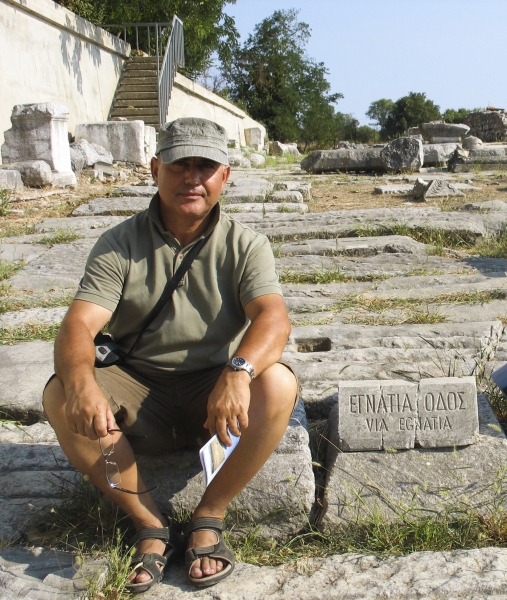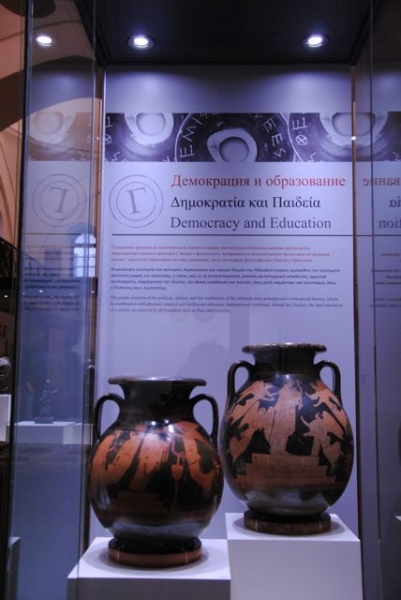Associate Professor Dr Lyudmil Vagalinski was born in 1958. He graduated in history with an archaeological profile from Sofia University "St. Kliment Ohridski" and specialized in Berlin and Munich. Since 2010, he has been director of the National Institute of Archaeology with Museum, the Bulgarian Academy of Sciences. Here is his interview with Polina Spartyanova.
 - Which are the richest countries in Europe in terms of history?
- Which are the richest countries in Europe in terms of history?
- In Europe, Bulgaria, Greece and Italy can boast the richest heritage, dating back to the most ancient times of humanity. If we talk about the antiquity from the VI century BC to the VI century AD, there are many archaeological sites and artefacts from that era. We are located at the crossroads of many important roads from Central Europe to Asia Minor, for example, and therefore many nations have left a mark of their culture here.
- What are the similarities and differences between the heritages of these three countries?
- Generally, there are many similarities between the cultural heritage of Greece and that of the south-eastern part of the Balkans. Bulgarian culture was created by close ethnic and cultural groups of Greeks and Thracians that were in contact for centuries. The Greeks themselves based their markets and colonies in Ancient Thrace, not only along the Black Sea coast but also inside the country, thus giving rise to the beginning of a kind of Para-Balkan culture.
The similarities with Italy date back to the time of Ancient Rome when the Balkan region was part of the empire that affected the local cultures.

- What are the basic periods of antiquity in Bulgaria?
- The period of antiquity started in the VI century BC when the first Greek colonies were created. They started spreading their urban traditions here and Thrace became part of the ancient Mediterranean world. This period ended in the VI century AD with the government reforms carried out by Emperor Heraclius. In this era, the Thracian culture and lifestyle, which are the subjects of our research even today, were very clearly distinguished.
- Where is the largest number of archaeological sites of this period in Bulgaria?
- The most distinguished place of this period is the Black Sea coast. In fact, the sea is a gateway to the world and, for this reason, there are a lot of materials, objects and artefacts from that period there. The oldest town in Bulgaria is Apollo, Sozopol now, which was founded in 607 BC by Greek emigrants and which was a colony of the city of Miletus. Inside Bulgaria there is a large number of Thracian archaeological sites too but the archaeological sites from the ancient period are concentrated along the Black Sea coast.
 - Currently, the National Archaeological Museum is hosting an exhibition of treasures from Greek museums. What could you tell us about the cooperation with your Greek counterparts?
- Currently, the National Archaeological Museum is hosting an exhibition of treasures from Greek museums. What could you tell us about the cooperation with your Greek counterparts?
- Our museum is displaying 195 exhibits from the National Archaeological Museum and the Numismatic Museum in Athens under the title "Leaving a Mark on History." The National Archaeological Museum in Sofia has not hosted a major foreign exhibition over the past 25 years and so we are very pleased with the cooperation with our Greek colleagues. Together with them, we have also been able to create, in the form of comics, a very good book for children. It has been translated into Greek and Bulgarian and allows young readers to explore things that are common in the ancient culture of Bulgaria and Greece. I am very glad that, despite the crisis, our Greek colleagues have found the courage to motivate the Greek institutions and businesses to unite their efforts and properly present Greece in Bulgaria.
- Are you planning a "visit" of Bulgarian archaeological exhibits to a museum in Greece?
- Since 2012 I have had different ideas for a joint exhibition in Greece and I have discussed them with my colleagues there, but we have not been able to realize them for various reasons. We can reread the history of Byzantium and ancient Bulgaria together because it is not just about wars during the reign of Tsar Samuel and Basil II, known as "the Bulgar-slayer". History does not disunite as believed by many Balkan politicians; it rather unites as long as we are well intentioned and able to read from different angles.
- What is happening now with the excavations of old Serdica, which have been unearthed during the construction of the second underground line in Sofia?
- The team of the National Institute of Archaeology with Museum is working on this site and we have unearthed very well preserved finds of the period from the I century to the IV century. At first, the representatives of Sofia municipality were sceptical as regards the state of the remains of Serdica and therefore we had to fight with them to preserve this historic find. Many times, I have said that one can build a new plant but one cannot restore destroyed archaeological heritage. The archaeologists have done their job in connection with old Serdica and now Sofia municipality and the Ministry of Culture have to decide how to present these finds to the public.